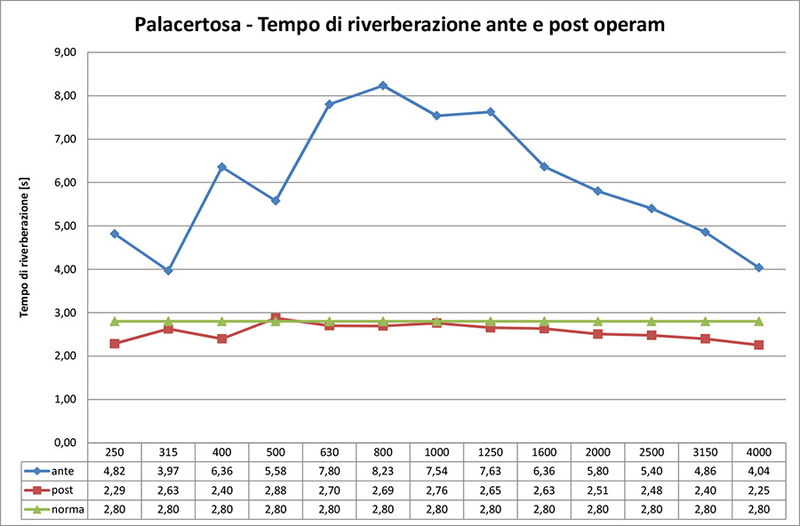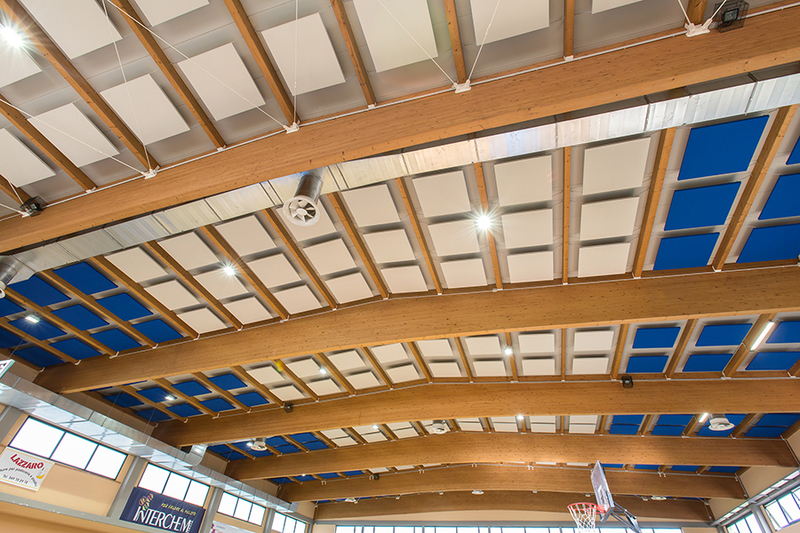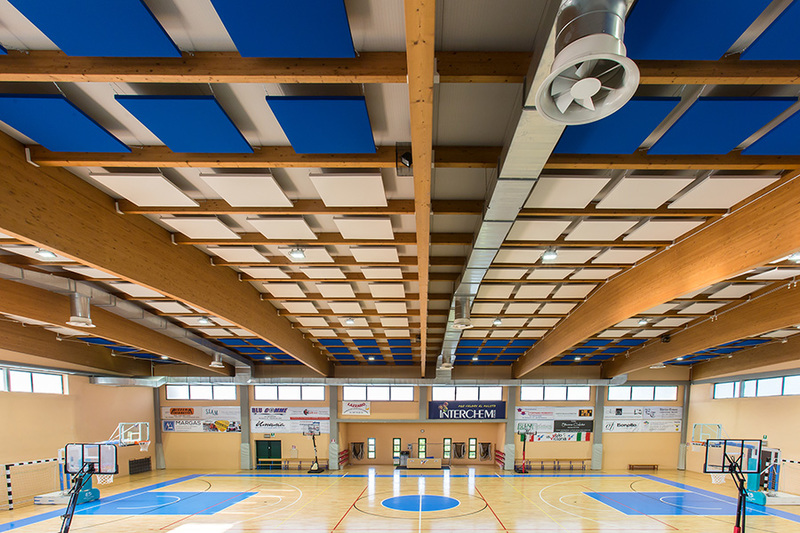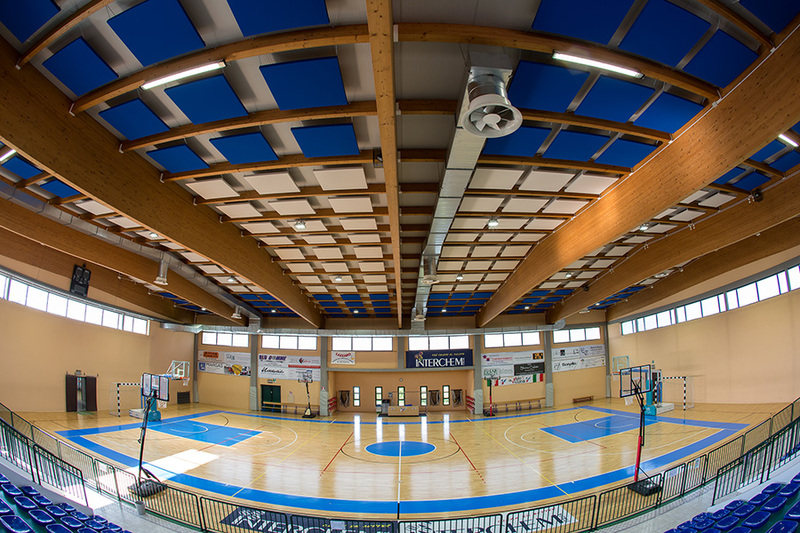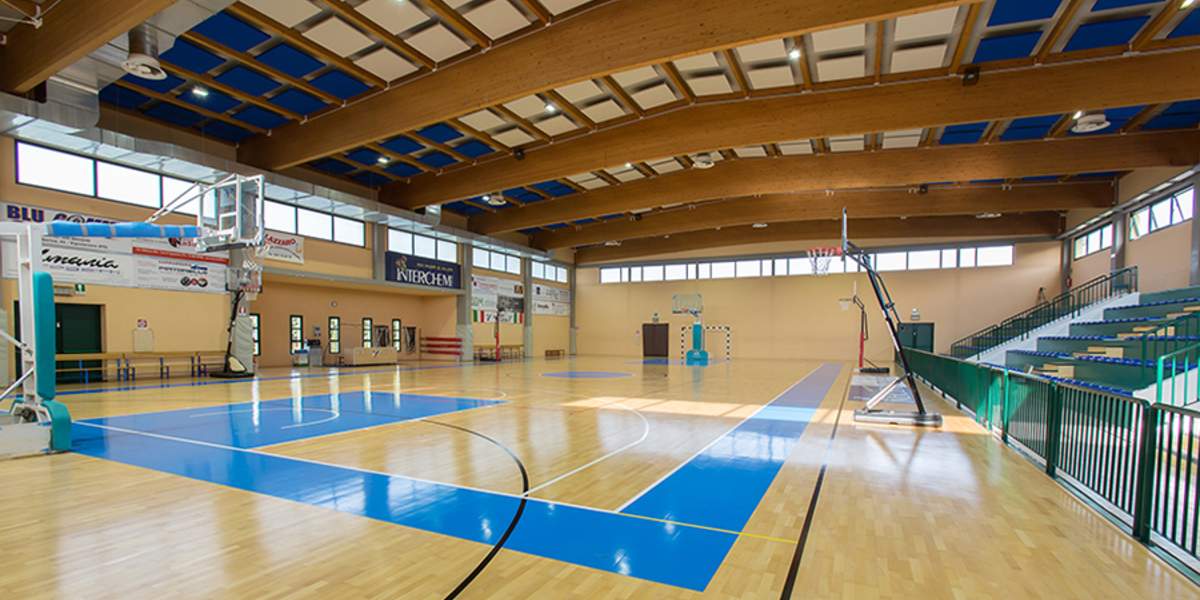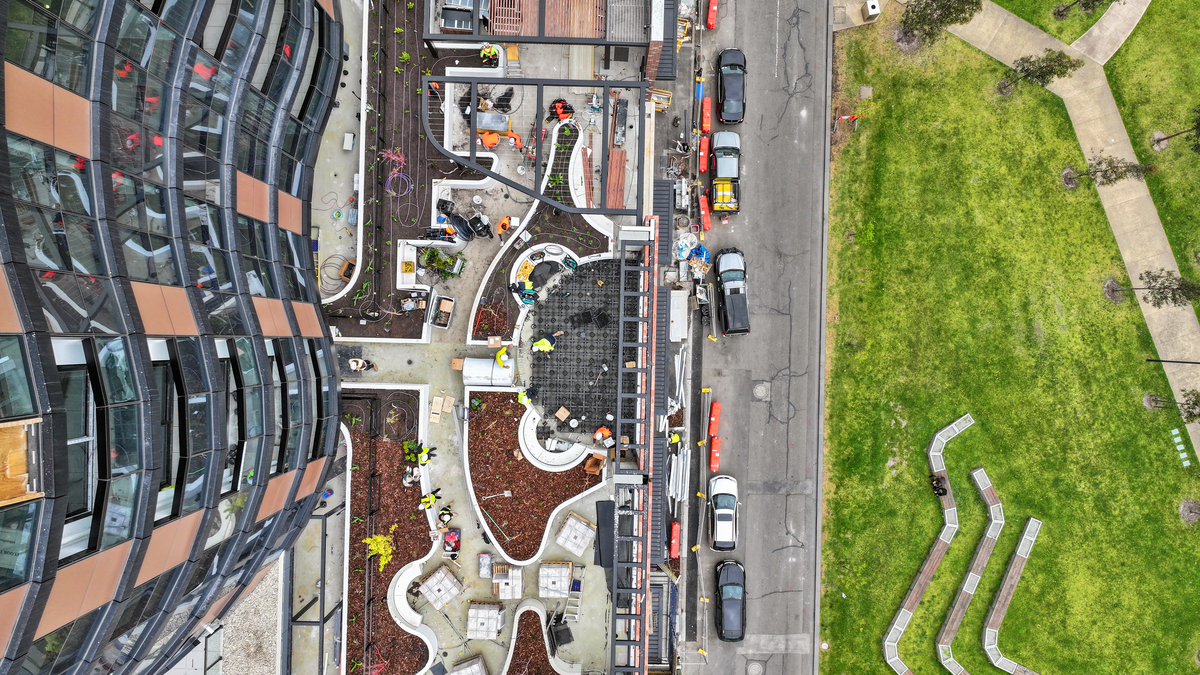Palasport Palacertosa
Reducing reverberation in sport destined areas - The case of the palasport of Vigodarzere (PD)
The buildings of many Italian towns consists, among others, by many sports arenas, often also used as venues for events and non-sporting meetings.
This is the case of the Palacertosa of Vigodarzere (PD), built at the beginning of 2000 and recently undergone redevelopment. The building is characterized by a free inner surface in 38.00 m x 24.00 m size plant, to a maximum height of approximately 10.00 m and a volume of about 8,000 m3. The seats are 300.
As historically happened to numerous sporting facilities, also in this case in the design phase and/or execution not efforts were made to reduce internal reverberation, making poor the quality of enjoyment of the environment, and almost reducing to zero speech intelligibility, even at a distance of few meters.
In 2016, the City Government has succeeded in raising the necessary funds to the retraining acoustics of Palacertosa, bankrolling first an analysis of the State of fact and, subsequently, entrusting the work to supply and laying of sound absorbing panels. The phonometric measurement conducted ante operam had provided extremely poor reverberation times values, ranging between 500 Hz and 1000 Hz of 8 seconds. These values, if compared with the latest legislative reference (UNI 11367:2010), appeared to be almost 3 times greater than what predicted by the standard technique for sport environments.
The redevelopment consisted in the application of about 300 PHONOLOOK 120 cm x 120 cm sized panels (5 cm thick), suspended through a system of chains and steel fixing. This suspension system, with provision of all items at the bottom and lifting panels in subsequent quota, allowed a quick and practical application, ensuring easy future disassembly in case of need of cleaning or replacing. The personalization of the panels allowed the supply of tissues complying with the colors of the company Basketball Vigodarzere.
As per request of the municipal administration, to work completed, we proceeded to check phonometric values post operam, conducted in the same manner and with the same strumentation used in the check ante operam. In particular, the measurement of impulse response was determined with the use of the signal sine-sweep, a variable frequency sine signal. With this technique, it was possible to measure not only the development of reverberation time according to the frequency, but also the most sophisticated parameters like the STI (sound transmission index) and C50 (clarity).
The remarkable results obtained with the help of acoustic absorption panels are shown in the graph, where are reported the situation ante operam and post operam.
As you can see, the phonometric measurements conducted ante operam, the calculation by Competent technical experts in acoustics, together with the use of PHONOLOOK panels, have made it possible to obtain values post operam perfectly aligned with the provisions of the technical standard UNI 11367.
Reverberation time ante and post operam
